Cecilia Laschi
Source-Free Bistable Fluidic Gripper for Size-Selective and Stiffness-Adaptive Grasping
Nov 05, 2025Abstract:Conventional fluid-driven soft grippers typically depend on external sources, which limit portability and long-term autonomy. This work introduces a self-contained soft gripper with fixed size that operates solely through internal liquid redistribution among three interconnected bistable snap-through chambers. When the top sensing chamber deforms upon contact, the displaced liquid triggers snap-through expansion of the grasping chambers, enabling stable and size-selective grasping without continuous energy input. The internal hydraulic feedback further allows passive adaptation of gripping pressure to object stiffness. This source-free and compact design opens new possibilities for lightweight, stiffness-adaptive fluid-driven manipulation in soft robotics, providing a feasible approach for targeted size-specific sampling and operation in underwater and field environments.
The Role of Touch: Towards Optimal Tactile Sensing Distribution in Anthropomorphic Hands for Dexterous In-Hand Manipulation
Sep 18, 2025Abstract:In-hand manipulation tasks, particularly in human-inspired robotic systems, must rely on distributed tactile sensing to achieve precise control across a wide variety of tasks. However, the optimal configuration of this network of sensors is a complex problem, and while the fingertips are a common choice for placing sensors, the contribution of tactile information from other regions of the hand is often overlooked. This work investigates the impact of tactile feedback from various regions of the fingers and palm in performing in-hand object reorientation tasks. We analyze how sensory feedback from different parts of the hand influences the robustness of deep reinforcement learning control policies and investigate the relationship between object characteristics and optimal sensor placement. We identify which tactile sensing configurations contribute to improving the efficiency and accuracy of manipulation. Our results provide valuable insights for the design and use of anthropomorphic end-effectors with enhanced manipulation capabilities.
Grasping by Spiraling: Reproducing Elephant Movements with Rigid-Soft Robot Synergy
Apr 02, 2025Abstract:The logarithmic spiral is observed as a common pattern in several living beings across kingdoms and species. Some examples include fern shoots, prehensile tails, and soft limbs like octopus arms and elephant trunks. In the latter cases, spiraling is also used for grasping. Motivated by how this strategy simplifies behavior into kinematic primitives and combines them to develop smart grasping movements, this work focuses on the elephant trunk, which is more deeply investigated in the literature. We present a soft arm combined with a rigid robotic system to replicate elephant grasping capabilities based on the combination of a soft trunk with a solid body. In our system, the rigid arm ensures positioning and orientation, mimicking the role of the elephant's head, while the soft manipulator reproduces trunk motion primitives of bending and twisting under proper actuation patterns. This synergy replicates 9 distinct elephant grasping strategies reported in the literature, accommodating objects of varying shapes and sizes. The synergistic interaction between the rigid and soft components of the system minimizes the control complexity while maintaining a high degree of adaptability.
Origami-Inspired Soft Gripper with Tunable Constant Force Output
Mar 03, 2025Abstract:Soft robotic grippers gently and safely manipulate delicate objects due to their inherent adaptability and softness. Limited by insufficient stiffness and imprecise force control, conventional soft grippers are not suitable for applications that require stable grasping force. In this work, we propose a soft gripper that utilizes an origami-inspired structure to achieve tunable constant force output over a wide strain range. The geometry of each taper panel is established to provide necessary parameters such as protrusion distance, taper angle, and crease thickness required for 3D modeling and FEA analysis. Simulations and experiments show that by optimizing these parameters, our design can achieve a tunable constant force output. Moreover, the origami-inspired soft gripper dynamically adapts to different shapes while preventing excessive forces, with potential applications in logistics, manufacturing, and other industrial settings that require stable and adaptive operations
Real-time Dynamics of Soft Manipulators with Cross-section Inflation: Application to the Octopus Muscular Hydrostat
Dec 04, 2024Abstract:Inspired by the embodied intelligence of biological creatures like the octopus, the soft robotic arm utilizes its highly flexible structure to perform various tasks in the complex environment. While the classic Cosserat rod theory investigates the bending, twisting, shearing, and stretching of the soft arm, it fails to capture the in-plane deformation that occurs during certain tasks, particularly those involving active lateral traction. This paper introduces an extended Cosserat rod theory addressing these limitations by incorporating an extra strain variable reflecting the in-plane inflation ratio. To accurately describe the viscoelasticity effect of the soft body in dynamics, the proposed model enhances the constitutive law by integrating the Saint-Venant Kirchhoff hyperelastic and Kelvin-Voigt viscous models. The active and environmental loads are accounted for the equations of motion, which are numerically solved by adapting the Geometric Variable Strain (GVS) approach to balance the accuracy and computational efficiency. Our contributions include the derivation of the extended Cosserat rod theory in dynamic context, and the development of a reduced-order numerical method that enables rapid and precise solutions. We demonstrate applications of the model in stiffness tuning of a soft robotic arm and the study of complex octopus' arm motions.
Octopus-Swimming-Like Robot with Soft Asymmetric Arms
Oct 15, 2024



Abstract:Underwater vehicles have seen significant development over the past seventy years. However, bio-inspired propulsion robots are still in their early stages and require greater interdisciplinary collaboration between biologists and roboticists. The octopus, one of the most intelligent marine animals, exhibits remarkable abilities such as camouflaging, exploring, and hunting while swimming with its arms. Although bio-inspired robotics researchers have aimed to replicate these abilities, the complexity of designing an eight-arm bionic swimming platform has posed challenges from the beginning. In this work, we propose a novel bionic robot swimming platform that combines asymmetric passive morphing arms with an umbrella-like quick-return mechanism. Using only two simple constant-speed motors, this design achieves efficient swimming by replicating octopus-like arm movements and stroke time ratios. The robot reached a peak speed of 314 mm/s during its second power stroke. This design reduces the complexity of traditional octopus-like swimming robot actuation systems while maintaining good swimming performance. It offers a more achievable and efficient platform for biologists and roboticists conducting more profound octopus-inspired robotic and biological studies.
Rod models in continuum and soft robot control: a review
Jul 08, 2024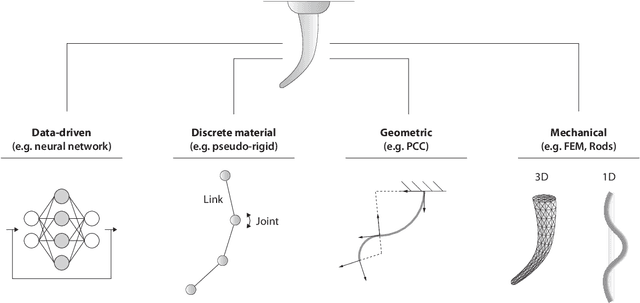

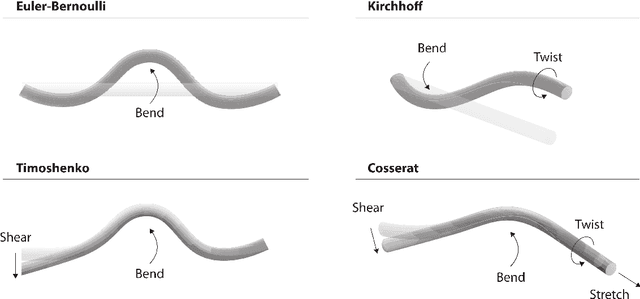

Abstract:Continuum and soft robots can positively impact diverse sectors, from biomedical applications to marine and space exploration, thanks to their potential to adaptively interact with unstructured environments. However, the complex mechanics exhibited by these robots pose diverse challenges in modeling and control. Reduced order continuum mechanical models based on rod theories have emerged as a promising framework, striking a balance between accurately capturing deformations of slender bodies and computational efficiency. This review paper explores rod-based models and control strategies for continuum and soft robots. In particular, it summarizes the mathematical background underlying the four main rod theories applied in soft robotics. Then, it categorizes the literature on rod models applied to continuum and soft robots based on deformation classes, actuation technology, or robot type. Finally, it reviews recent model-based and learning-based control strategies leveraging rod models. The comprehensive review includes a critical discussion of the trends, advantages, limits, and possible future developments of rod models. This paper could guide researchers intending to simulate and control new soft robots and provide feedback to the design and manufacturing community.
Plant-inspired behavior-based controller to enable reaching in redundant continuum robot arms
Apr 14, 2023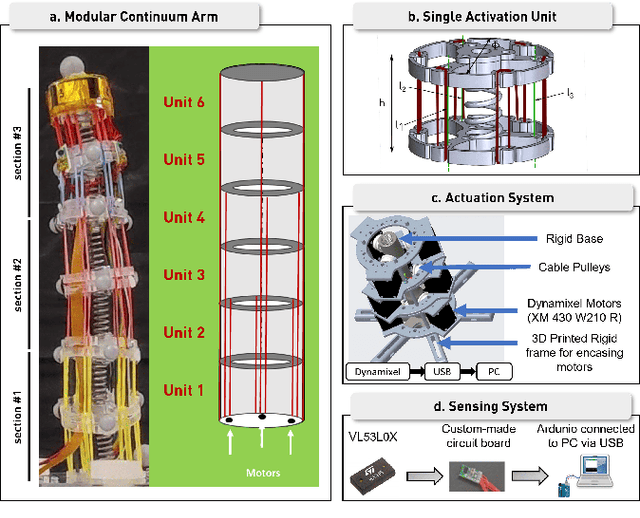
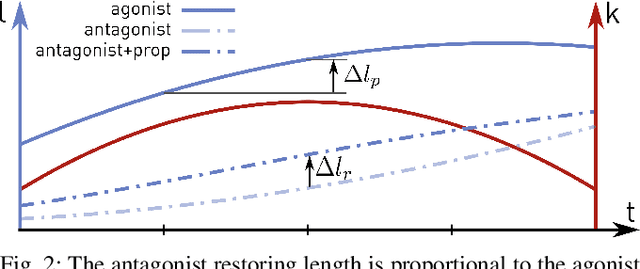
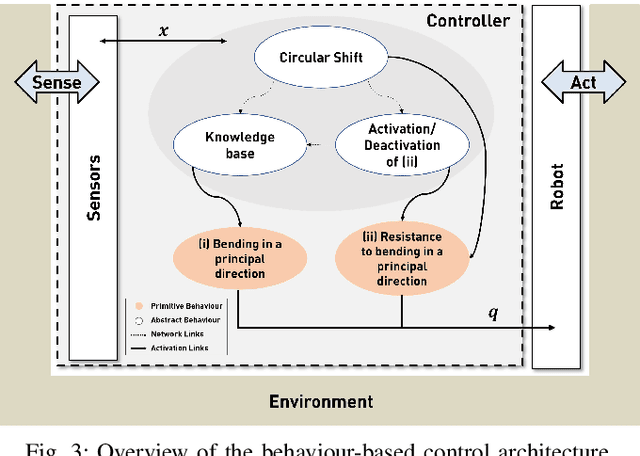
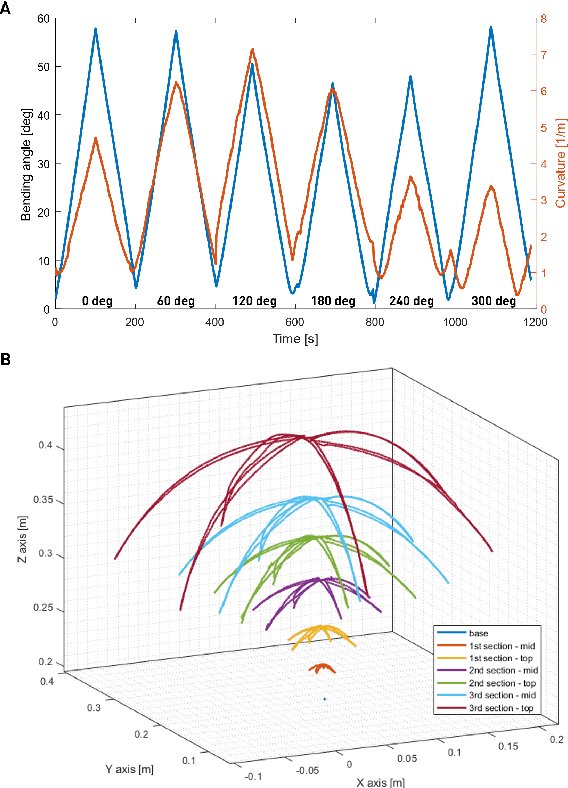
Abstract:Enabling reaching capabilities in highly redundant continuum robot arms is an active area of research. Existing solutions comprise of task-space controllers, whose proper functioning is still limited to laboratory environments. In contrast, this work proposes a novel plant-inspired behaviour-based controller that exploits information obtained from proximity sensing embedded near the end-effector to move towards a desired spatial target. The controller is tested on a 9-DoF modular cable-driven continuum arm for reaching multiple setpoints in space. The results are promising for the deployability of these systems into unstructured environments.
The iCub multisensor datasets for robot and computer vision applications
Mar 04, 2020



Abstract:This document presents novel datasets, constructed by employing the iCub robot equipped with an additional depth sensor and color camera. We used the robot to acquire color and depth information for 210 objects in different acquisition scenarios. At this end, the results were large scale datasets for robot and computer vision applications: object representation, object recognition and classification, and action recognition.
A bistable soft gripper with mechanically embedded sensing and actuation for fast closed-loop grasping
Feb 13, 2019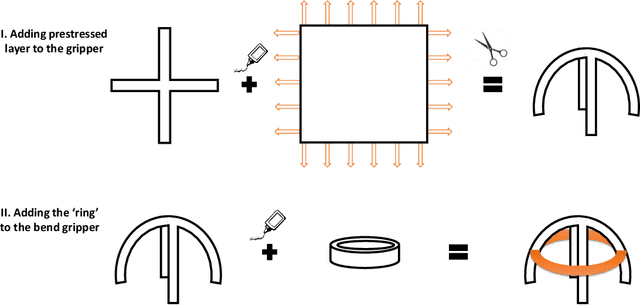
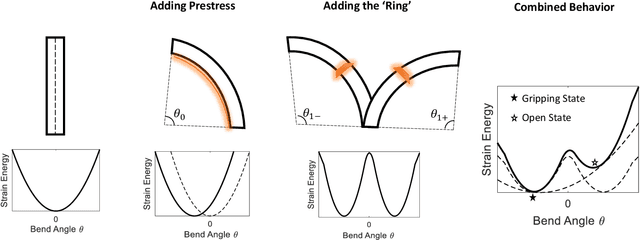
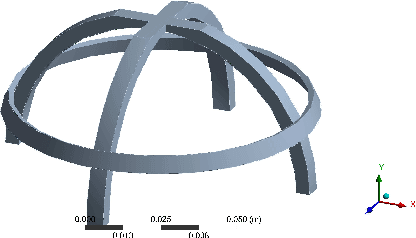
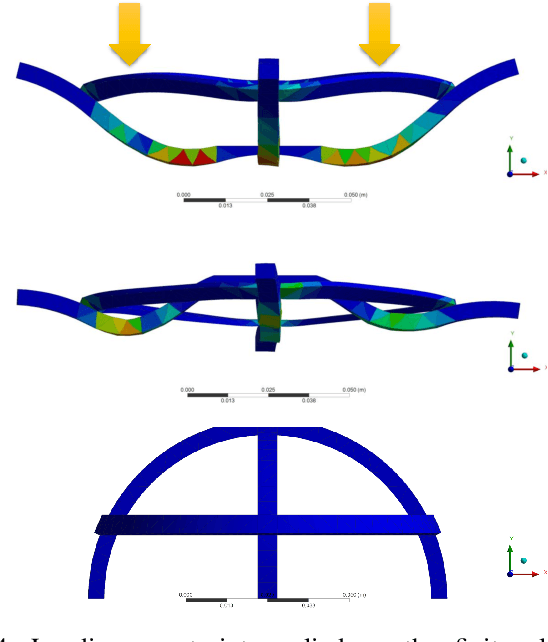
Abstract:Soft robotic grippers are shown to be high effective for grasping unstructured objects with simple sensing and control strategies. However, they are still limited by their speed, sensing capabilities and actuation mechanism. Hence, their usage have been restricted in highly dynamic grasping tasks. This paper presents a soft robotic gripper with tunable bistable properties for sensor-less dynamic grasping. The bistable mechanism allows us to store arbitrarily large strain energy in the soft system which is then released upon contact. The mechanism also provides flexibility on the type of actuation mechanism as the grasping and sensing phase is completely passive. Theoretical background behind the mechanism is presented with finite element analysis to provide insights into design parameters. Finally, we experimentally demonstrate sensor-less dynamic grasping of an unknown object within 0.02 seconds, including the time to sense and actuate.
 Add to Chrome
Add to Chrome Add to Firefox
Add to Firefox Add to Edge
Add to Edge